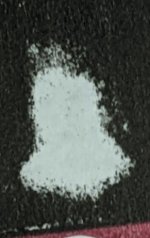Good Day,
We are a flexo print facility and have been having some low spot issues recently. We have liquid pour plates and a WH Press. I have put a question out to my vendor for assistance but figured I'd double-down and head to the forums for confirmation. In the attached images you can see the low spots printed on our press.
The plates have been reviewed prior to sending to the press department. This issue was not recognized during the review.
After printing, we can see the issues and it is felt within the plate. This is something that could possibly have been missed during the review. But I feel this is happening too often for so many plates to be missed.
I just wanted to know if anyone has seen anything similar and if they might have an idea of what could be the cause.
In my experience, I have seen low spots. But nothing quite like what is seen in images 06 and 07.
Thanks for any feedback.
We are a flexo print facility and have been having some low spot issues recently. We have liquid pour plates and a WH Press. I have put a question out to my vendor for assistance but figured I'd double-down and head to the forums for confirmation. In the attached images you can see the low spots printed on our press.
The plates have been reviewed prior to sending to the press department. This issue was not recognized during the review.
After printing, we can see the issues and it is felt within the plate. This is something that could possibly have been missed during the review. But I feel this is happening too often for so many plates to be missed.
I just wanted to know if anyone has seen anything similar and if they might have an idea of what could be the cause.
In my experience, I have seen low spots. But nothing quite like what is seen in images 06 and 07.
Thanks for any feedback.





















